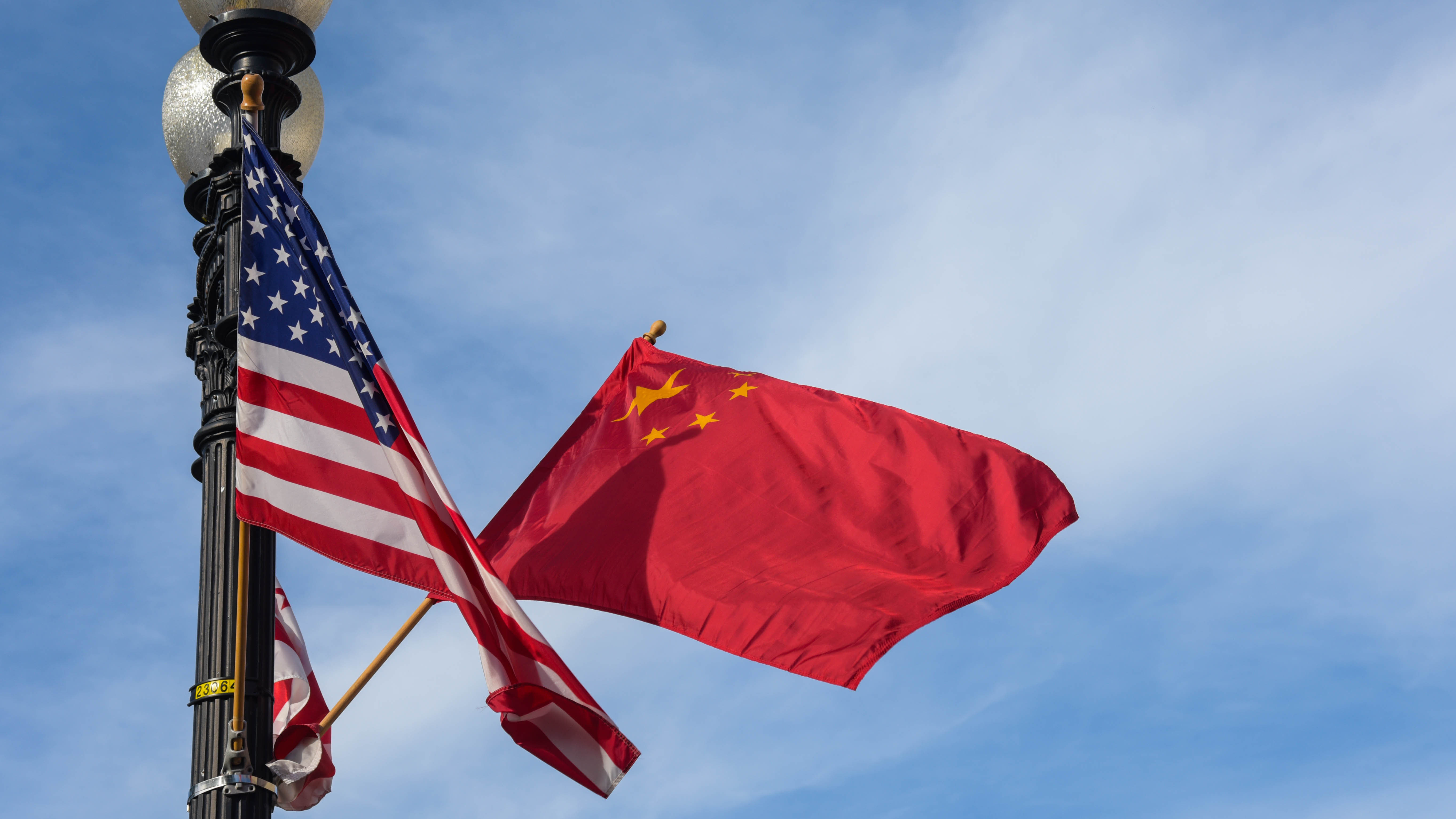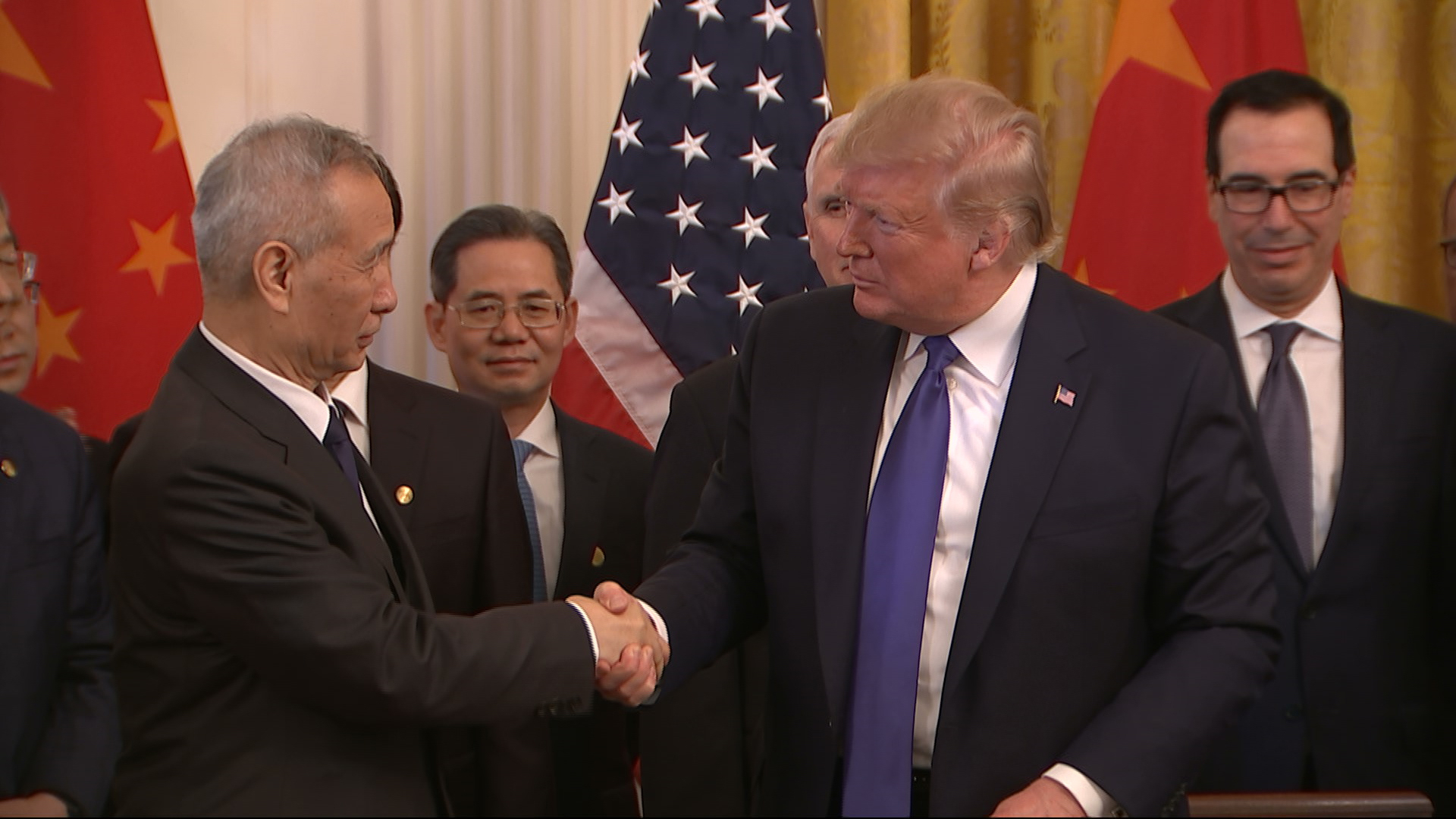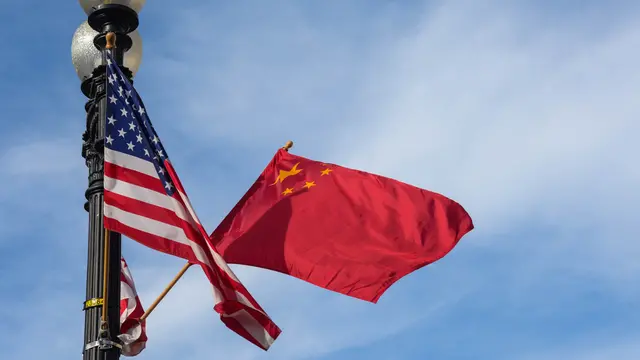
The national flags of China and the United States /Xinhua Photo
Editor's note: John Gong is a research fellow at Charhar Institute and professor at the University of International Business and Economics.
The article reflects the author's views and not necessarily those of CGTN.
After a torturoustwo-year journey of 13 on-and-off rounds of negotiations, China and the United States have finally come to sign what is called "a phase one trade agreement," which covers issues of intellectual property rights (IPR) protection, technology transfer, financial market access andChina's commitment to increase imports by 200 billion U.S. dollars over the 2017 level in the next two years. These purchases cover manufactured goods, agricultural goods, energy products and services, which represent the strength of America's export sectors.
At a time of celebration and historicimportance, there have been some domestic concerns, alleging that the trade deal is largely made out of China's concessions to America. However, such concerns don't hold water. Icarefully wentthrough the 80-oddpage document, and I would hardly characterize most of its content as "concessions" made by China. Isn'tbetter IPR protection something that this country needs to move toward? Regardless of the extent of IPR and trade secret abuse existing in this country right now, the fact of the matter is that corporate China is developing and expanding globally, drivenbythegreat innovation. Many Chinese companies, such as Huawei in thetelecom industry, have moved from being a licensee to a licensor.
Another exampleis with respect to rooting out counterfeit products, which we have been fighting against for over a decade now. From now on, business is not going to be as usual. I boldly predictthat those sleazy onlinestores purveying fake crap will soon disappear from the market.China needs a clean and competitive business and legal environment.

Chinese Premier Liu He (L) and U.S. President Donald Trump (R) shake hands after signing the phase one trade deal at the White House in Washington, D.C., January 15, 2020. /Xinhua Photo
In short,this agreement contains plenty of things that the centralgovernment plans to do in the future. The only thing that is alleged as "big concession" is China's commitmentto purchasing200 billion U.S. dollars'worth of goods. But honestly, this is really not much of a big deal.
Essentially, we have to increase imports from America about 100 billion U.S. dollars, some of which we are already buying from other countries, for example, jet planes from Airbus, soybean from Brazil, pork and beef from Australia and Argentina, and energy products from other oil-producing countries.
I would say these allegations of a "China's concession" are short-sighted andlack overall strategic thinking.This trade deal is much more profoundthan it appears. As trade issues lie at the heart of foreign relations, China and the U.S., the world's two largest economies need to maintain good relationsfor the sake of the world'sprosperity.
History is full of wars due to trade. As JP Coen, the fourth director of the Dutch East India Company, told his board of directors,"We cannot make trade without war, nor war without trade." Today,the United States has many voices, especiallyfrom thedefense and the intelligencecommunity, advocating decoupling with China. To some extent, China has its fair share of decoupling advocates.
As U.S.Trade Representative Robert Lighthizer put it duringan interview on a cable channel, this trade agreement speaks round and clear that both countries are not going to choose to go down that path of decoupling.China and the U.S.will continue to engage with each other based on equality and mutual respect.
(If you want to contribute and have specific expertise, please contact us at [email protected].)
 简体中文
简体中文

